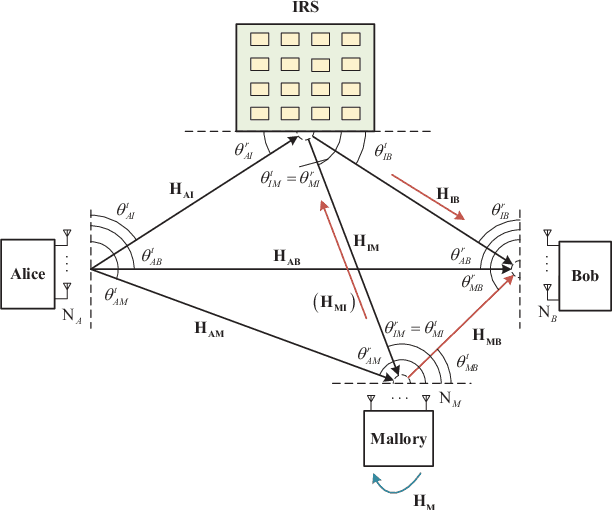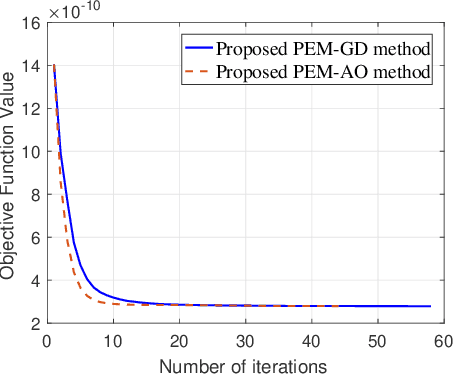Hangjia He
Beamforming and Phase Shift Design for HR-IRS-aided Directional Modulation Network with a Malicious Attacker
Feb 18, 2023Abstract:In this paper, we propose to use hybrid relay-intelligent reflecting surface (HR-IRS) to improve the security performance of directional modulation (DM) system. In particular, the eavesdropper in this system works in full-duplex (FD) mode and he will eavesdrop on the confidential message (CM) as well as send malicious jamming. We aim to maximize the secrecy rate (SR) by jointly optimizing the receive beamforming, transmit beamforming and phase shift matrix (PSM) of HR-IRS. Since the optimization problem is un-convex and the variables are coupled to each other, we solve this problem by iteratively optimizing these variables. The receive beamforming and transmit beamforming are obtained based on generalized Rayleigh-Ritz theorem and Dinkelbach's Transform respectively. And for PSM, two methods, called separate optimization of PSM (SO-PSM) and joint optimization of PSM (JO-PSM) are proposed. Thus, two iterative algorithms are proposed accordingly, namely maximizing SR based on SO-PSM (Max-SR-SOP) and maximizing SR based on JO-PSM (Max-SR-JOP). The former has better performance and the latter has lower complexity. The simulation results show that when HR-IRS has sufficient power budget, the proposed Max-SR-SOP and Max-SR-JOP can enable HR-IRS-aided DM network to obtain higher SR than passive IRS-aided DM network.
High-performance Estimation of Jamming Covariance Matrix for IRS-aided Directional Modulation Network with a Malicious Attacker
Oct 22, 2021


Abstract:In this paper, we investigate the anti-jamming problem of a directional modulation (DM) system with the aid of intelligent reflecting surface (IRS). As an efficient tool to combat malicious jamming, receive beamforming (RBF) is usually designed to be on null-space of jamming channel or covariance matrix from Mallory to Bob. Thus, it is very necessary to estimate the receive jamming covariance matrix (JCM) at Bob. To achieve a precise JCM estimate, three JCM estimation methods, including eigenvalue decomposition (EVD), parametric estimation method by gradient descend (PEM-GD) and parametric estimation method by alternating optimization (PEM-AO), are proposed. Here, the proposed EVD is under rank-2 constraint of JCM. The PEM-GD method fully explores the structure features of JCM and the PEM-AO is to decrease the computational complexity of the former via dimensionality reduction. The simulation results show that in low and medium jamming-noise ratio (JNR) regions, the proposed three methods perform better than the existing sample covariance matrix method. The proposed PEM-GD and PEM-AO outperform EVD method and existing clutter and disturbance covariance estimator RCML.
 Add to Chrome
Add to Chrome Add to Firefox
Add to Firefox Add to Edge
Add to Edge